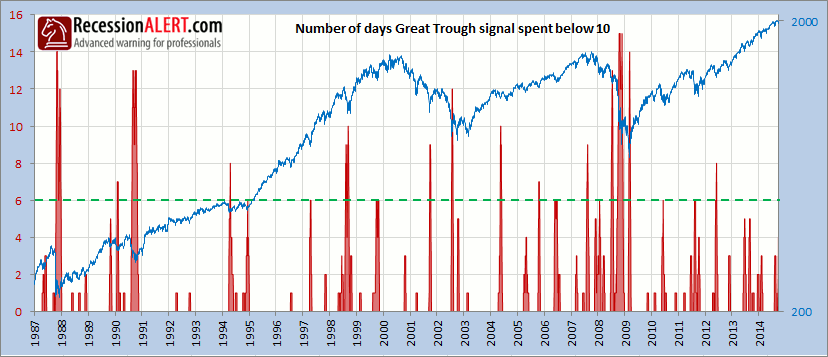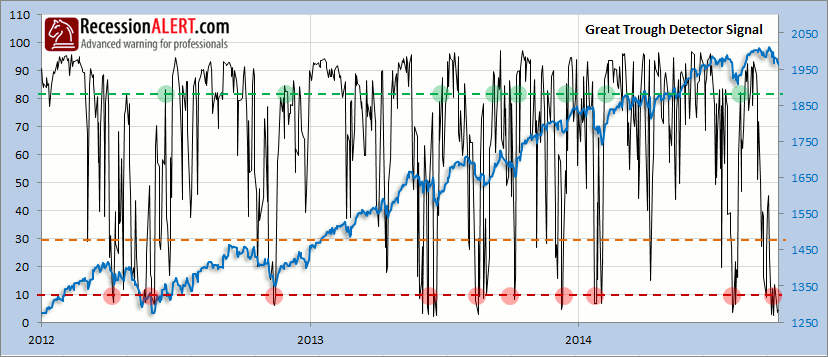The current stock market correction is diminutive in relative terms – hardly anything to sit up and take notice of. However an examination of underlying breadth deterioration reveals an astonishing plunge of the net new quarterly highs (the percentage of new quarterly highs less the percentage of new quarterly lows). This percentage has been languishing below 10 for 6 days now. Below is a historical chart showing periods where this breadth index was below 10% and for how many days it remained below 10%, together with the SP-500 index:
We can see that periods where this breadth remained below 10% for six or more days are very rare and normally associated with much larger looking corrections. Of the 21 times this occured since 1987, all but 4 gave good signals, resulting in a better than 80% accuracy. A closer look at the breadth signal in more recent times as we publish each day for our subscribers is shown below:
Four actionable events arise from this chart, namely:
CLASS-A Trade:
1. When breadth rises from below 10% to above 81% within 10 days, BUY the market.
2.When breadth falls below 30%, SELL the market (correction warning).
CLASS-B Trade: (only when Class-A inactive)
1. When breadth rises from below 30% to above 81% within 10 days, BUY the market.
2.When breadth falls below 30%, SELL the market (correction warning).
Over the course of several decades the Class-A signals offer higher risk/reward ratios than the more prolific Class-B’s but as you can see in the last 3 years they both have worked respectably. This strategy has worked superbly well for our clients since we launched the Great Trough Detector over 2 years ago. The question is do you take the sign of unprecedented breadth collapse on the back of a minor correction as an ominous sign or as a rare buy-on-the dip opportunity? The answer of course lies in whether you still take the view that we are in an ongoing bull market or not. For this assessment,we need to examine a broad array of econometric, momentum and breadth metrics, similar to those described in our Composite Market Health Index.


